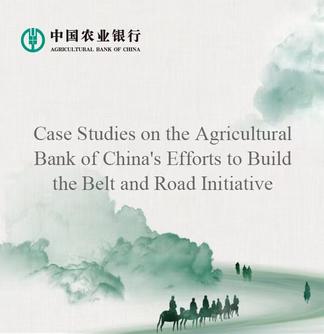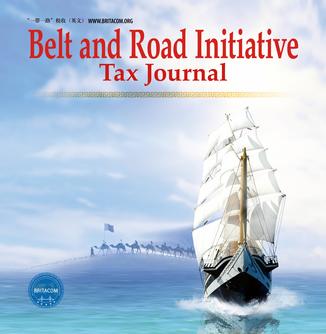China cuts logistics cost by 35.6 bln yuan in H1 -- Chinese authorities have massively reduced the country's logistics by canceling road tolls and encouraging Internet-based freight brokerage. National logistics costs fell by 35.6 billion yuan (5.3 billion U.S. dollars) in H1, accounting for 45.5 percent of annual cost reduction goals, according to the Ministry of Transport.
China's Caixin manufacturing PMI hits four-month high in July -- China's manufacturing activity expanded at its fastest pace in four months in July on the back of economic stabilization, a private survey showed on Tuesday. The Caixin China General Manufacturing Purchasing Managers' Index (PMI) stood at 51.1 for July, up from 50.4 in June, the highest level in four months, according to the survey conducted by financial information service provider Markit and sponsored by Caixin Media Co. Ltd.
China QFII quota rises to 93.27 bln USD -- China's dollar-denominated Qualified Foreign Institutional Investors (QFII) program rose to 93.27 billion U.S. dollars at the end of July, the country's forex regulator said on July 31. A total of 284 overseas institutions have received quotas under the QFII program to move money into the country's capital account, the State Administration of Foreign Exchange said. As of June 29, the quota had stood at 92.72 billion U.S. dollars.
China's July inflation rate to drop slightly -- China's consumer prices will continue to rise in July but the growth rate will likely slow due to tame food prices and a weakening carry-over effect, according to a research note by the Bank of Communications. The consumer price index (CPI), a main gauge of inflation, is expected to increase 1.4 percent year on year this month, retreating slightly from the 1.5-percent expansion registered in both June and May, the research note said.
China expects bigger tourism trade surplus -- China's tourism trade surplus is expected to increase as the country is taking in more cash from inbound visitors than its outbound travelers spend overseas, according to the country's tourism industry watchdog. Inbound tourism revenue rose 5.6 percent year on year to 120 billion U.S. dollars in 2016, exceeding outbound tourism spending by 10.2 billion dollars, CNTA data showed. In the first half of 2017, inbound tourists made 69.5 million trips, while 62 million overseas trips were made by Chinese tourists, the CNTA statement said.
China's cultural industry reports steady revenue growth -- China's cultural industry saw steady revenue growth in the first half of 2017 on strong income from "Internet Plus" cultural services, official data showed. The sector's combined revenue amounted to 4.39 trillion yuan (about 651.3 billion U.S. dollars), up 11.7 percent year on year, according to the National Bureau of Statistics. The growth rate was 3.8 percentage points higher than the same period last year.
China H1 online sales of home appliances up 16.9 pct -- China's online sales value of home appliances saw robust growth in H1, according to a report released on August 2 by the China Center for Information Industry Development. The report showed that online business-to-customer sales of home appliances on the Chinese market hit 216 billion yuan (about 32 billion U.S. dollars) in the first half of 2017, up 16.9 percent year on year. The online sales value accounted for nearly one-third of the country's total home appliance sales, the report said.
China's gold output drops in H1 -- China's gold output dropped in the first half of this year due to stricter rules on solid waste from production and shrinking reserves. A total of 206.54 tonnes of gold were produced in January-June, down 9.85 percent from a year ago, according to the China Gold Association. Among the total, 178.46 tonnes were gold mineral, while 28.08 tonnes were a byproduct of nonferrous metal smelting. The ten top gold producers accounted for 53.24 percent and 39.74 percent of the country's total refined gold and gold mineral output respectively.
Xinjiang H1 foreign trade up 34 pct -- The foreign trade volume of northwest China's Xinjiang Uygur Autonomous Region from January to June grew over a third year on year, custom authorities said. Rising demand from neighboring central Asian countries helped push up Xinjiang's trade volume to 9 billion U.S. dollars in H1, up 34 percent year on year, Urumqi Customs said. Exported goods, mainly mechanics, textiles and shoes, were 7.7 billion dollars, up 34.8 percent year on year. Imports, including farm produce, copper ore and paper pulp, reached 1.2 billion dollars, an increase of 29.3 percent.
Beijing's electric buses to number 10,000 by 2020 -- The number of electric buses in Beijing will increase from the current 1,000 to 10,000 by 2020 in an effort to improve the environment, said Beijing Public Transport Group on August 2. The proportion of buses purely powered by electricity among the total public transport vehicles will increase from the current 10 percent to 60 percent in three years, said Zhong Qianghua, deputy general manager of the group. Zhong said electric buses create lower emissions and less noise. Each of the vehicles can reduce carbon dioxide emissions by 45 tonnes every year, and the vehicles are free from PM2.5 emissions.




 A single purchase
A single purchase








